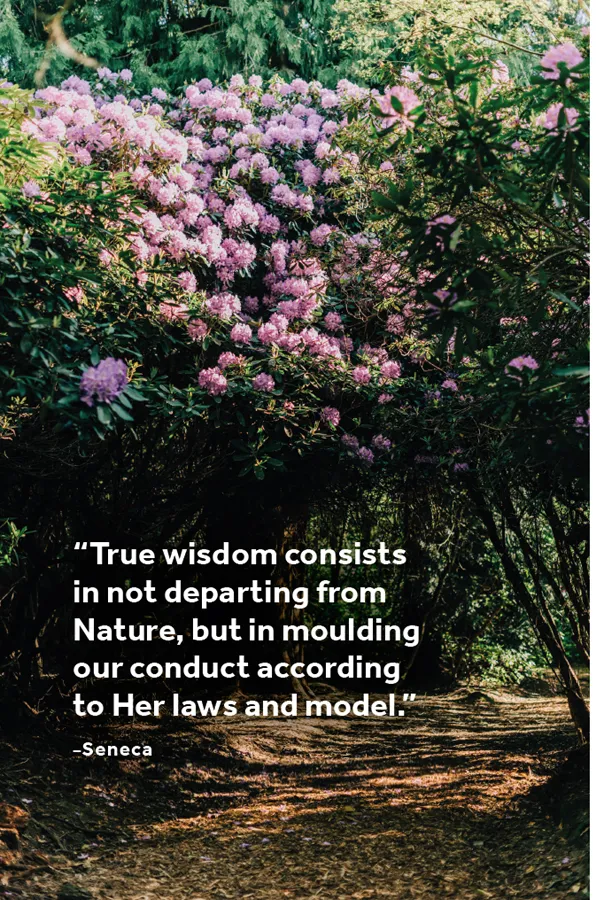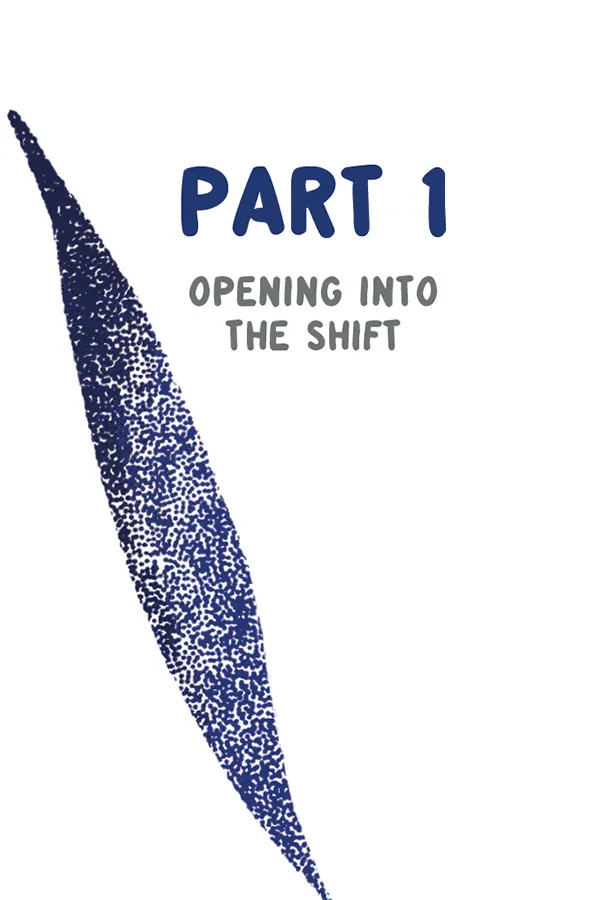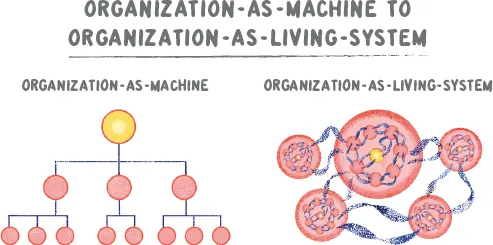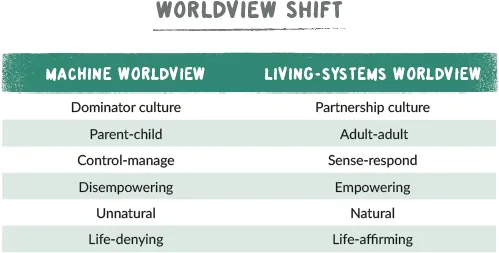![]()
![]()
1
The Shift in Leadership and Organizational Development now Required
It’s a fascinating yet challenging time to be a leader. Multiple and profound shifts affect the way we work, how and why we do things, and the purpose and meaning we bring to our organizations. This new norm in business is characterized by unceasing transformation. Change upon change upon change is what leaders are now facing. There’s a maelstrom of motives contributing to this volatile business terrain: hyper-connectivity, erratic transaction costs, disruptive innovations, shifting societal norms, new ways of working, fragile supply chains, resource scarcity, rising health and wellbeing concerns, widespread disenfranchisement across workforces, the search for deeper meaning and purpose through work, and increasing systemic shocks (COVID, the Climate Emergency, mass migrations triggered by conflicts such as Ukraine, Syria and Afghanistan, and more on the horizon). No organization is spared, and the call for a life-affirming approach to business has never been more needed.
This new norm in business demands a new norm in leadership—a leadership consciousness that cultivates organizational cultures able to adapt and evolve during unceasing transformation in ways that create flourishing for all.
Moving Beyond the Machine Mindset
Much of today’s L&OD logic continues to be cemented in a worldview of mechanistic reductionism originated by the Scientific Revolution of the 16th and 17th centuries. This view of the world draws upon assumptions of separateness, predictability, replicability, and control. Life is assumed to be made up of separate things struggling for survival in a dog-eat-dog world of hyper-competition. It is then assumed that these separate things in life can be compartmentalized, controlled, measured, and managed in linear, predictable ways through push-pull mechanisms. As a result, relationships between component parts and their wider context are often overlooked or de-emphasized.
This view of life informed Frederick Taylor’s Principles of Scientific Management published in 1909. Taylorism became hugely influential in setting the context for viewing the organization as a machine, a view that is still dominant today. Employees are relegated to the role of efficiently performing the duties as defined by management who compartmentalize activities and relationships in an effort to make operations easier to control and measure.
When this machine logic becomes a dominant worldview, we start to believe that the organization is a set of neatly definable parts that can be measured and controlled in isolation, where the leadership team control from the top, cascading commands through layers of management to the workers at the bottom. Here a narrowed focus is applied to optimizing short-term returns while perceiving stakeholder relations through the threat-tinted lens of hyper-competition. This mentality creates fragile organizations based on control, fear, and exploitation which undermines trust, disempowers employees, corrupts purpose, and exploits the wider business ecosystem—all in the name of short-term maximization. This reductionist view is a recipe for extinction not evolution. While the logic of the machine may pride itself on driving out inefficiencies, it ultimately creates burgeoning bureaucracy and disempowerment within the organization and widespread fragilities beyond.
Gary Hamel and Michele Zanini’s London Business School research explores how the stratified power structures, specialized roles, and standardized tasks of the organization-as-machine create a massive bureaucratic drag costing the US economy alone over $3 trillion annually. (Hamel & Zanini, 2016) Another organization-as-machine inefficiency has been brought to light by Harvard Business School professors Robert Kegan and Lisa Lahey. Most leaders and employees are doing a second job no one is paying them for—the job of managing other people’s impressions of themselves, covering up their weaknesses, playing politics, hiding uncertainties, and hiding their true selves at work. (Kegan & Lahey, 2016) Far from the machine-mindset driving out inefficiencies, this method of operating destroys productivity, resilience, innovation, and initiative.
In actuality, organizations are constantly evolving. They are relational and purposeful systems made up of messy, unpredictable human relationships that thrive within a diverse web of stakeholder relations intimately interrelated with wider society and the natural world. Organizations display non-linear dynamics and self-organizing behaviors—they are more akin to living-systems than machines. These living-organizations respond to continuous change and continually learn, evolve, and thrive during unceasing transformation. The organization-as-machine, on the other hand, with its top-down perspectives far-removed from the customer and its expensive and cumbersome change-management projects, falls woefully short in future-proofing the business. Global research shows that the shareholder returns of living-organizations consistently outperform their mechanistic counterparts, especially through volatile times. (Bragdon, 2016)
The Necessary Evolution from Machine to Living-systems L&OD
The L&OD living-systems paradigm is a worldview shift that moves us onward from yesterday’s machine paradigm. A “worldview shift” may sound daunting, especially when many of us experience enough stress, busyness, and volatility in the workplace today. The good news is this worldview shift is a genuine return. It is a revitalization of something innate, a reconnection with the true nature within us and the rhythms and ways of nature all around us. Woven into our human physiology and psychology is the natural capacity to embrace a living-systems worldview. Letting go of old, illusory ways while welcoming in our deeper nature—what could be more invigorating?
When, as leaders, we are able to let go of the outdated mechanistic tendencies and expand our restricted view of the organization, we open ourselves and our teams up to how life inherently operates—in harmony. We learn how to work with natural rhythms and methods that encourage the vitality and adaptability of the organization. We learn to lead by nature.
Let’s take ourselves out of the busy work environment for a moment and reflect on our everyday life. We successfully go about our daily chores, errands, and affairs without the need for top-down, command-control managers telling us what to do. Whether it’s picking the kids up from school, washing up after Sunday lunch, going to the theatre, catching a train, or organizing a birthday party, we seldom hand over our self-authoring power to managers. We might seek advice from partners and friends or ask experts about certain projects, but when someone starts to tell us what to do in a dictatorial way, our defenses go up, we get wary, and we switch off.
Because being “managed” feels like a form of oppression that undermines our own sovereignty, and so we retract. As we retract, the relationship between ourselves and the other person is subtly inhibited; it no longer flows as naturally, and creative potential is lost. Sure, there will certainly be times when it is wise to exercise authority or assertiveness of one’s view. Leading by Nature is not a namby-pamby way of relating to others in the organization. No, not at all. Leading by Nature is about noticing when we are standing strong in our authentic true nature as opposed to instances when we are either forcing another person or being forced by another whose trying to dominate us. To use psychology lingo, it’s the difference between an adult-adult dynamic and a parent-child dynamic.
A recent global Gallup poll shows that 85% of workers are disengaged, which illustrates the extent to which our mechanistic mindset is crippling organizational effectiveness. It’s a mindset that creates human suffering, psychological distress, and unhealthy interpersonal relations right at the heart of our enterprises, the very place where creativity, passion, purposefulness, and adaptive learning ought to be unlocking our brilliance. Hence, the number one most important thing our leaders need to address is the ability to transcend the old, life-denying organization-as-machine mindset and expand into a leadership consciousness that frees our self-and-system awareness so that we can better sense and respond to the systemic dynamics at play across the organization-as-living-system.
This evolutionary shift in L&OD is a learning-in-action process. First and foremost, it’s an internal shift, an embodied process—rather than a linear tick-box exercise—where one must become self-aware of old habits while patiently practicing new ones. Secondly, it requires enriching the cultural soil of the organization so that each person can draw nourishment from everyday interactions as they learn and adapt.
The good news is that we need look no further than within and all around us to find inspiration for this L&OD shift from a machine into a living-systems worldview.
When we observe a forest or woodland, reductive machine logic sees trees struggling against each other in a competitive battle for survival of the fittest. However, when we sharpen our lens of perception-using a living-systems lens—we start to see the immense, inter-relational venture at play. Different species of trees share nutrients with each other through the soil, and tree roots form intimate relationships with mycelia, bacteria, and microbes. The forest floor is teaming with networks that benefit the vibrancy, resilience, and evolutionary dynamics of the whole ecosystem. In only a handful of healthy soil there’s more living beings working together than there are human beings on the entire planet.
What Charles Darwin originally meant by the phrase “survival of the fittest” was not “dominate or become dominated,” but rather each species adapts to an ever-changing context by “fitting-in” to its niche. It’s not the strongest species that survive nor the most intelligent but the ones most able to adapt to change. This adaptive edge is what our organizations need to foster by welcoming in the living-systems worldview into our L&OD.
Future-Fit Organizations as Living-Systems
There is so much to learn from our trees and soil, let alone nature’s fuller ensemble. In nature’s collectives—ant colonies, beehives, flocks of birds, and shoals of fish—we find the pervasive behavior of sensing-responding. A scientific descriptor for this sensing-responding behavior is stigmergy, where collectives create adaptability, coherence, and resilience without the need for planning, control, direct communication, or top-down dictate. But it’s not just swarms or shoals that display this sensing-responding behavior, it’s a core life behavior that we can observe anywhere, from the forest floors to deep-sea vents, from mountain ranges to prairies. Everywhere there’s life we find sensing-responding behavior.
Adult developmental psychology studies indicate that leaders able to sense and work with the emergent and evolutionary dynamics of life are better equipped to lead 21st century future-fit organizations. (Laloux, 2014) Take developmental psychologist Clare Graves who painstakingly researched levels of consciousness across thousands of adults. What he called Tier 2 consciousness (the next stage of consciousness he witnessed emerging in adults across business and society) is hallmarked by the capacity to sense the systemic inter-relational nature of emergent systems in both natural and human systems. “Know how nature functions and you know how to behave [in Tier 2],” said Graves. (Beck, 2018)
This gives way to the rising trend to learn from nature. Yet, even when seeking to learn from nature, we all too often get caught up in yesterday’s logic, which, as we know, seeks to compartmentalize, categorize, and rationalize. We bring the same old mechanistic lens to our biological explorations that desensitized us to nature’s relationality. While a reductive scientific understanding of nature along with a systematic set of nature’s principles is indeed useful (and certainly something we can draw-upon to inform the new L&OD logic), the challenge and the opportunity lie in shifting our consciousness into a more holistic attentiveness to the nature of life all around and within us. This endeavor is as fresh as it is ancient.
Chinese sages perceived the manifest phenomena of nature as conveying deep insights about how change unfolds in life. It is not the outer forms, functions, and designs of nature but the inner underlying rhythms of transformation which precede the outer natural forms that provide insightful wisdom. My nature-inspired coaching work draws upon the numerous wisdom traditions that understand the importance of the underlying wisdom innate in life—Ayurveda, Buddhism, Shintoism, Daoism, Confucianism and Sufism from the East, Alchemy and Hermeticism from the West, and Tantric and Shamanic traditions found the world-over. This underlying wisdom of life is what I refer to as Nature’s Wisdom.
Nature’s Wisdom
The ability for our sophisticated, digitized, yet stressed-out organizations to attune with Nature’s Wisdom is the next frontier. It means aligning with life itself, nothing more nothing less. All of life-including human society, the organization, and the leader—is immersed in an ever-changing rhythmic and relational dance. When off kilter with the rhythms of this dance, chaos and fragi...




